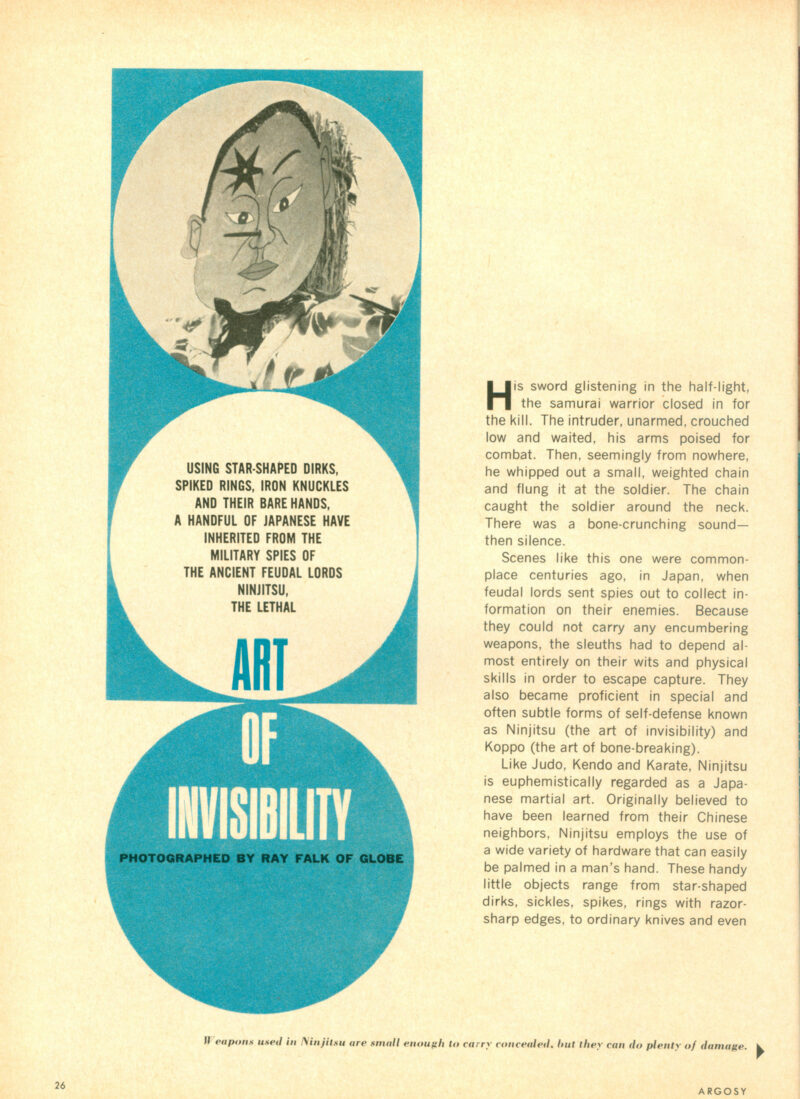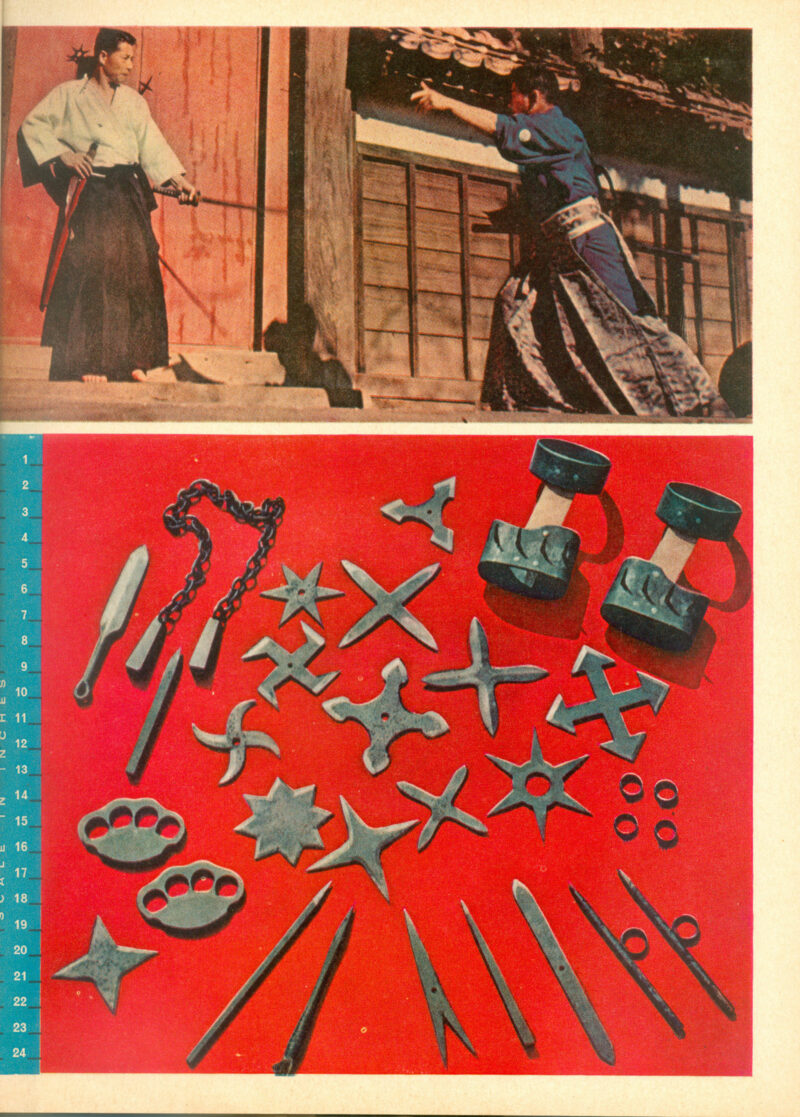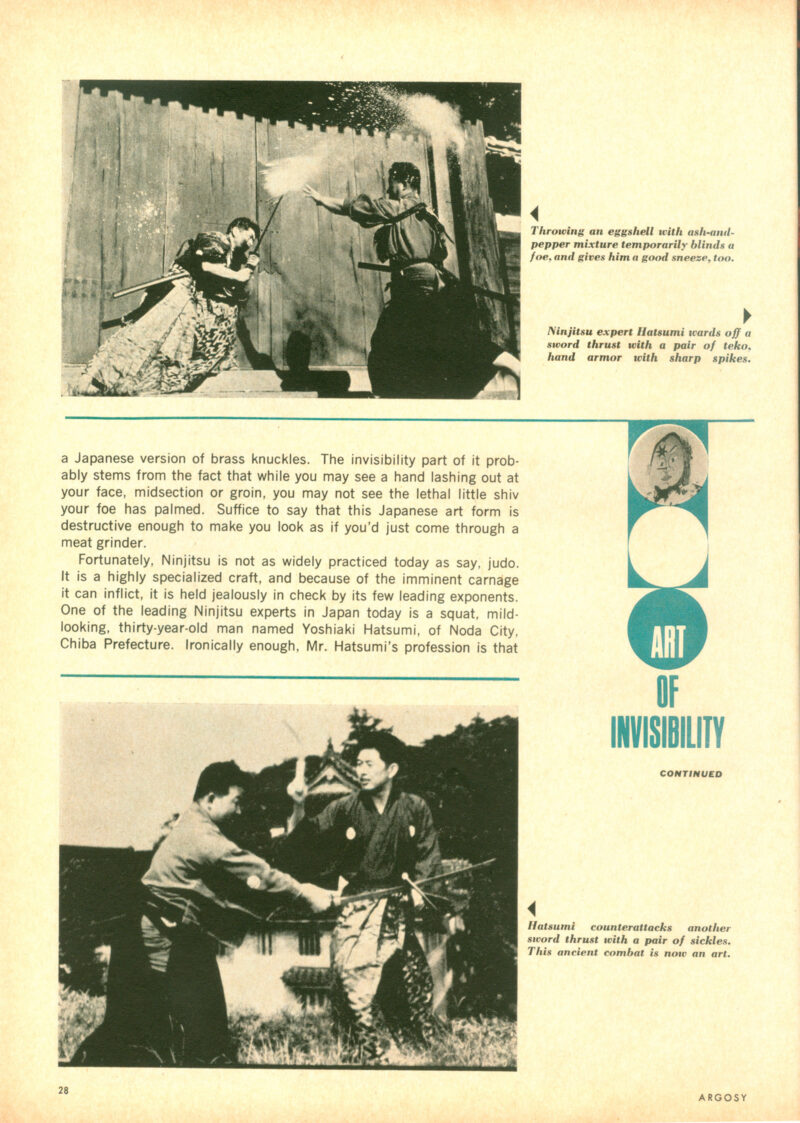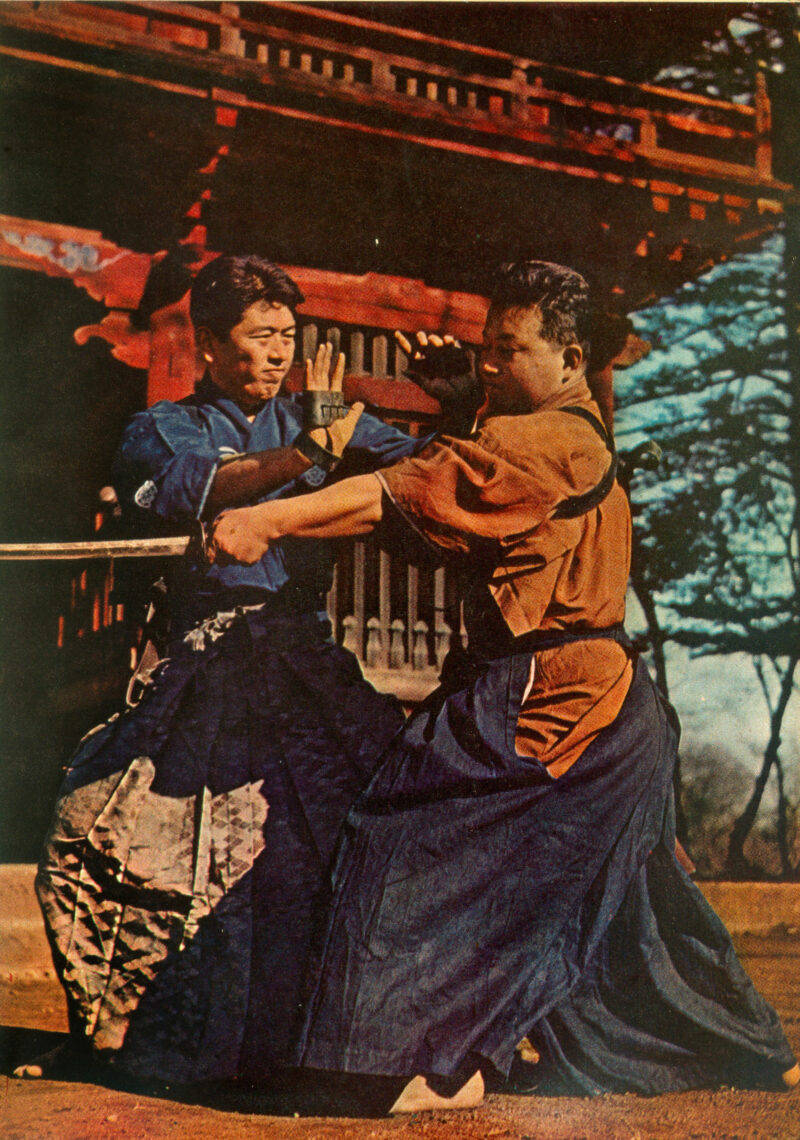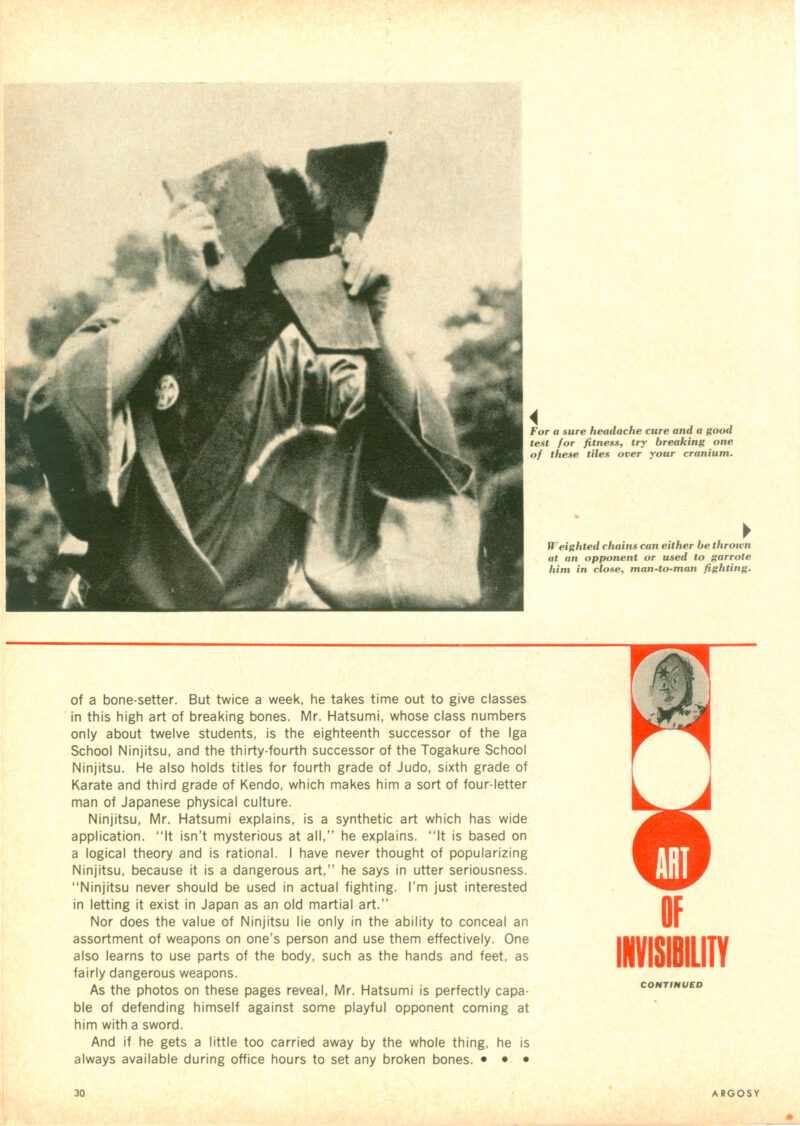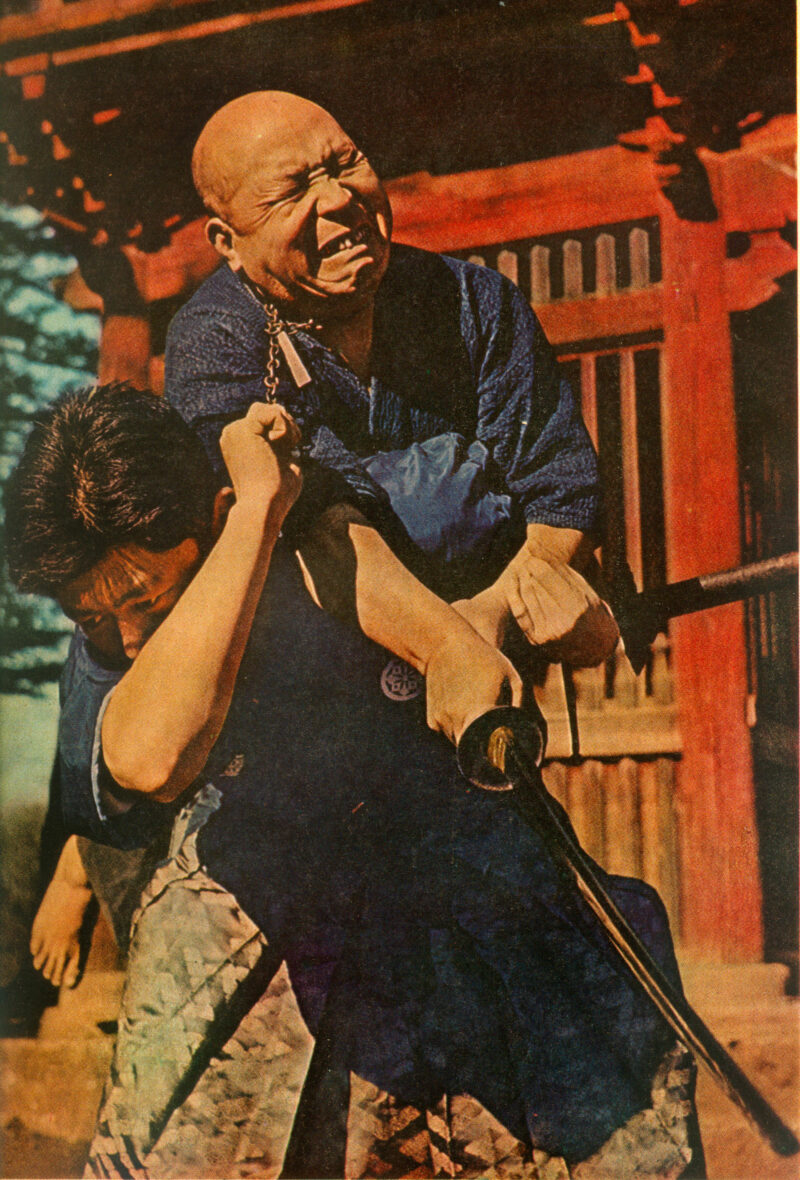In researching VN’s timeline of the 80s ninja craze, the pre-history was easily the most interesting. The tiny nuggets from the 60s and 70s — magazine articles, network TV episodes, occasional comics — largely unsung during the two decade process that quietly fertilized the soil of the shinobi beanstalk, offer some eye-opening surprises.
In the early days of the craze, say 1981, when the name Masaaki Hatsumi was sweeping across bookshelves and magazine racks, and the teachings of his Bujinkan were pollenating around the globe, few realized the multi-media ambassador and curator of modern ninjutsu’s first exposure in the Western world came twenty years before in an issue of a pulp fiction rag that went back to the 1880s.
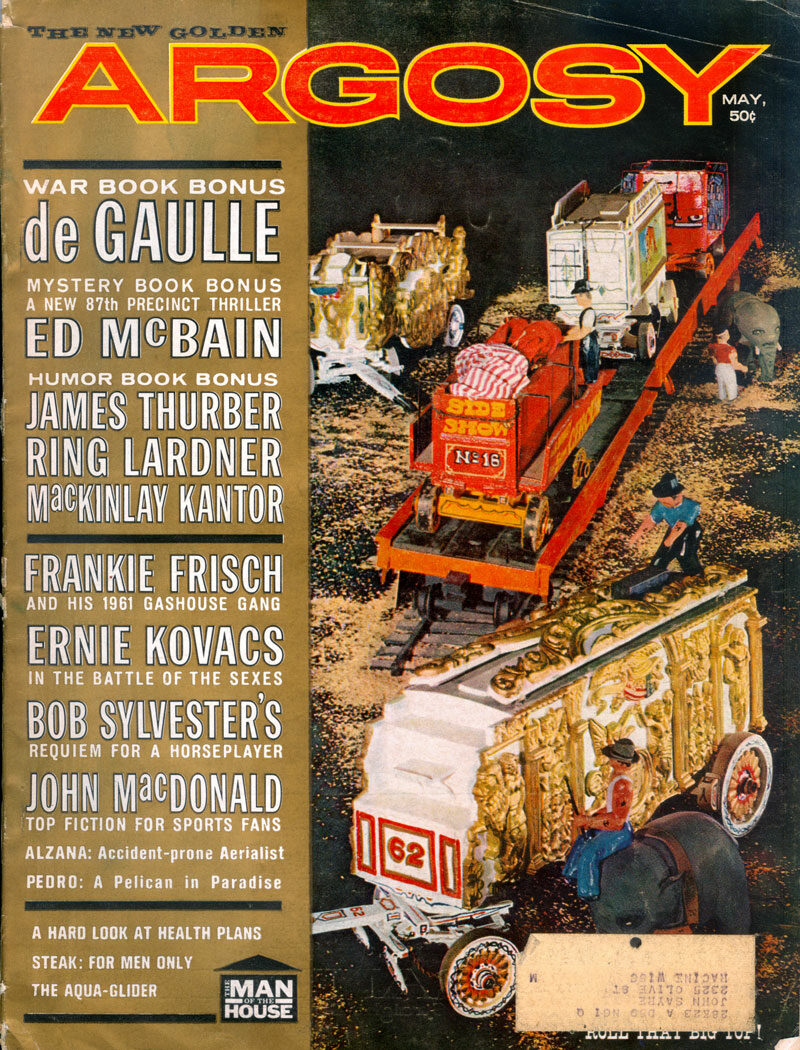
Self-aggrandized as “The Largest Selling Fiction-Fact Magazine for Men,” Argosy Magazine was built on a tradition of action-packed exploits of frontier pistoleers, two-fisted war heroes, sensationalized sports achievements and intrepid global explorers, both in prose fiction and infotainment articles. And in May of 1961 they quietly introduced the world to Japan’s formerly secret warrior tradition — “ninjitsu.” [sic]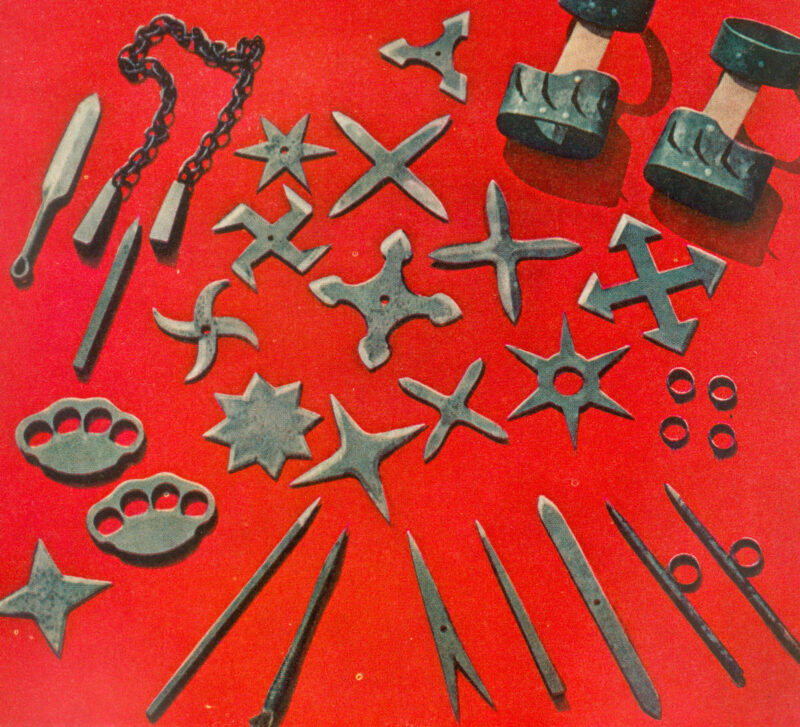
In a six-page photo-article entitled “The Art of Invisibility” by Ray Falk, manly-man readers were introduced to a select few martial arts practitioners in Japan keeping alive antiquated fighting arts used by military spies of the feudal era. The approach of the editorial is similar to contemporary fascinations with karate, judo, and kung-fu — novel ways those curious little ‘Orientals’ fight instead of straight up fisticuffs like real pipe-smoking, steak-eating men with proper chest hair do. The tone here is more clever than the preciousness or passive-aggressive contempt you see in other martial arts bubble-gum aimed at the general public, and it also latches on to exotic gadgets and weapons right away, just as the craze would decades later.
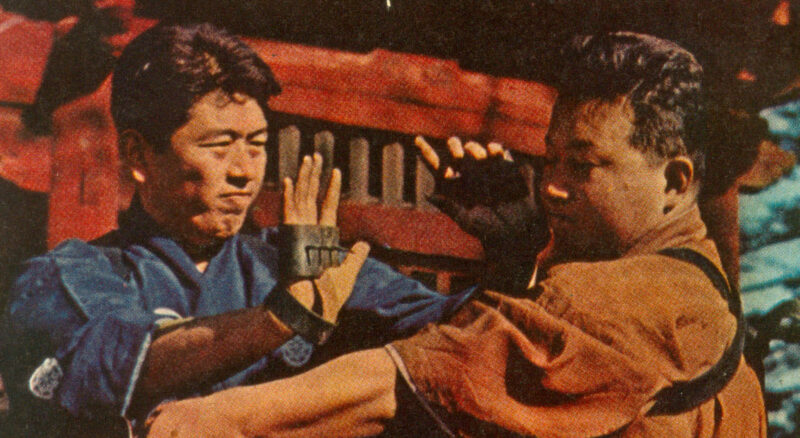
Then still known as Yoshiaki Hatsumi, the future grandmaster is portrayed as a curiosity, seclusively guarding arcane dirty-fighting arts from a modern world better off without them. Falk also loves the idea of this bone-breaking expert also being a medical professional by regular trade.
It’s an innocent enough piece of light fluff, but considering in 1961 the ninja boom in Japan was just igniting there and we were still years away from You Only Live Twice, this feature is staggeringly ahead of the curve. And at this point, a full year before Shinobi-no-Mono would help make the black suit and hood requisite iconography, there’s none of the familiar tropes that would both bless and burden the ninja idiom in the coming decades.
In 1961, a pioneering feature on modern day ninja didn’t even make the issue’s highlights listed on the cover. In 1981, this feature would have been the cover, and Hatsumi would have been hooded. And they’d have sold the living hell out of it…
Photos from this article would later be adopted by the ground-breaking book Spike & Chain: Japanese Fighting Arts by Charles V. Gruzanski, but apart from that this is an all-but-forgotten, albeit damn nifty, piece of ninja lore.
Enjoy the full piece below…
